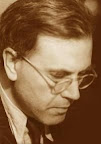Easter: Notes on Its Historicity
 In honor of Easter, I am going to be posting a series of articles and excepts about the Resurrection of Our Blessed Lord Jesus Christ, and on its significance for us.
In honor of Easter, I am going to be posting a series of articles and excepts about the Resurrection of Our Blessed Lord Jesus Christ, and on its significance for us.
Here's the first, some brief notes about the historicity and materiality of the resurrection, i.e., that Jesus of Nazareth, truly a man like us all in every way but sin, actually returned to life after having become completely dead. I'll start with an excerpt from Veselin Kesich's The First Day of the New Creation: The Resurrection and the Christian Faith, an excellent book that I read for class while in seminary. Parts of it are hard, but most are fairly accessible.
The basic agreement among the evangelists in their accounts of what happened on the first Easter morning is more significant than certain discrepancies in those accounts. All four evangelists bear witness to the empty tomb, either stating this explicitly or, like St Mark, clearly implying it. The variations in the accounts actually testify to their authenticity and serve as an important indicator that the story of the empty tomb belongs to the most primitive gospel tradition. It is highly unlikely that the empty tomb stories could be legendary embellishments of a later period in the life of the Church, for if the Church had fabricated them, we should expect the Christian community to have created a harmonious account. The Church did not try to harmonize the accounts, but instead faithfully transmitted the traditions that were received, (Kesich, 71).The question of whether a dead man could really rise from the dead is not a new one. The Acts of the Apostles describes the rejection of his message of the ressurection of Jesus Christ (Acts 17:32). Later, St. Paul writes his letters, he adamantly defends the resurrection as an actual, material event in 1 Corinithians, implying that the essential doctrine of Christianity was being called into question then as well. In fact, St. Paul asserts that the event was not only material and historical, but publicly witnesses as well. He writes:
Now I would remind you, brethren, in what terms I preached to you the gospel, which you received, in which you stand, by which you are saved, if you hold it fast -- unless you believed in vain. For I delivered to you as of first importance what I also received, that Christ died for our sins in accordance with the scriptures, that he was buried, that he was raised on the third day in accordance with the scriptures, and that he appeared to Cephas, then to the twelve. Then he appeared to more than five hundred brethren at one time, most of whom are still alive, though some have fallen asleep. Then he appeared to James, then to all the apostles. Last of all, as to one untimely born, he appeared also to me.In the later New Testament writings, the generic terminology of the "exaltation" of Jesus is replaced with the more specific term "resurrection," also alerting to the likelihood that clarification of the authors' intent was felt to be important (Kesich, 81).
1 Corinthians 15:1-8
A great volume, monstrously long and detailed, is N. T. Wright's book The Resurrection of the Son of God (Christian Origins and the Question of God, Vol. 3). The book is really stupendous, but I warn you: at 740 pages it is the sort of text that most people will want to take a few pages at a time
Whether a skeptic, ancient or modern, wants to reject the accounts of the resurrection out of hand as impossible within the framework of their materialist conception, there can be in any event no doubt about what the apostles intended. They believed and taught from the very first day that Jesus Christ is risen from the dead.























No comments:
Post a Comment